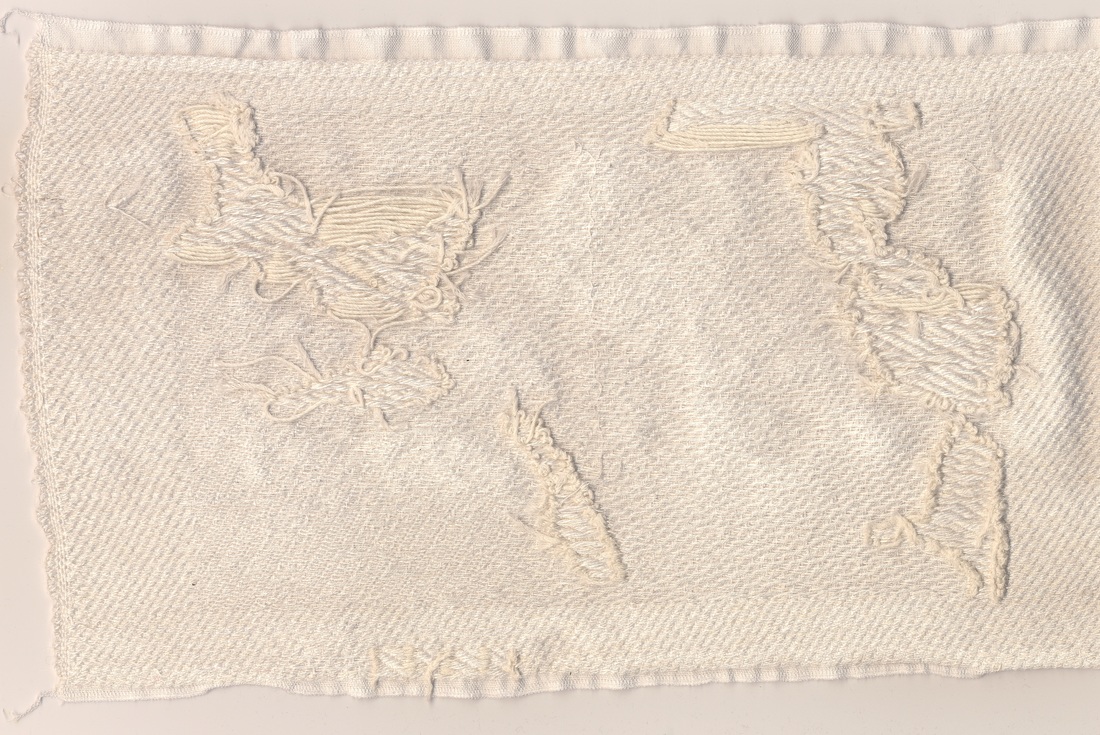ARCHIVE: 3T3 CELLS IN CULTURE
|
Submitted image (click to enlarge): 3T3 Cells in Culture
|
Submission title: 3T3 Cells in Culture
Submitted by: WhiteFeather Hunter Participant’s field of work/interest: Biotextiles and Tissue Engineering Participant’s Image Description: "3T3 connective tissue cells in culture, collected as biological data during the process of cell culture and tissue engineering at SymbioticA Centre of Excellence in Biological Arts, UWA, Perth, Australia. Manually fostering cell culture growth on traditional, aesthetic textile forms speaks to the intersection of hands-on wet biology practices with creative craft processes. 3D-printed weaving tools remain as part of the living cultures after practical use, as an integral and conceptual part of the overall laboratory apparatus: a comment on materiality as well as the agency and haptic intelligence of microbiological systems to design themselves in cooperation with intentional/artistic human design.” http://whitefeatherhunter.com/section/402353_Crafting_Biotextiles.html Translated by Geneviève Moisan and woven by Geneviève Moisan and Sophia Borowska. |
|
Pointcarré weaving simulation (click to enlarge).
Translation to Weaving
In the image submission, cells are growing
in a liquid culture. To emphasize the idea that the cells are living, growing,
and visible only under specific conditions, we used a UV-sensitive weft yarn
that turns lavender under light. The cells, executed in brocade, emerge from
their background under light and recede in the dark, emphasizing how sensitive
these microscopic particles are to their surroundings. Though light actually kills cells, the
material’s “intelligent” reaction to light and emergence from a uniform
background reflects Hunter’s investigations and processes. Rather than keeping
the entire image lavender, we selected only the cells to be in the
light-sensitive yarn, so that their materiality and colour would differentiate
them from the background in which they grow. The background wefts were chosen
to imitate the light-sensitive yarn when it is not being affected by light.
-Sophia |
Weaving structures - click to see full set of structures - available to WDRG members only.
Technique and Process Notes
The culture in the image has a diagonal
texture and movement, which was imitated by the use of twills. Shaded satins
were used to give detail to the brocaded cells.
-Sophia Threads Used: Warp is white 2/16 mercerized cotton. Wefts are cream 2/16 cotton, white 4/8 synthetic fuzzy yarn, and purple HiKoo Abracadabra yarn (50g/100yds, knitting weight DK) |
Outcome Notes
The yarns used were thicker and stiffer
than recommended for the warp, and the weaving is therefore highly textured,
stiff, and curls around itself. The cells are not as invisible as we had hoped
even in the absence of UV light, because of the difference in material and
weave structures alone.
-Sophia Number of Picks: 166 Woven Dimensions: 10” x 15.5” Weaving Density: 135 ppi (average including brocade wefts) Original Dimensions: 640 × 480 |
Images of Final Woven Samples
*scanned images do not show the colour change in the light-sensitive yarns.
FRONT (ABOVE), BACK (BELOW).







